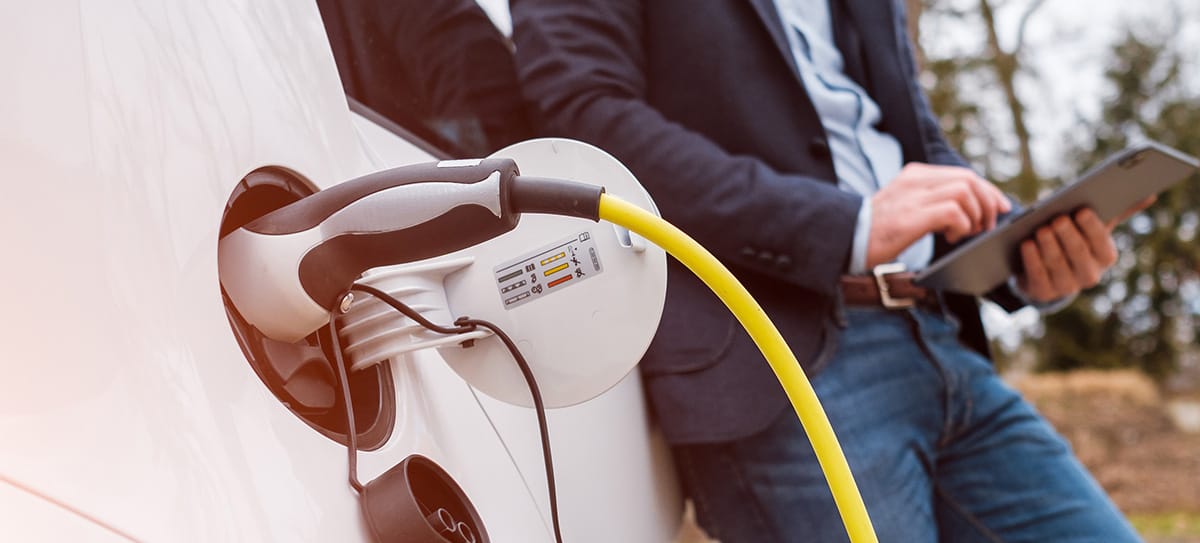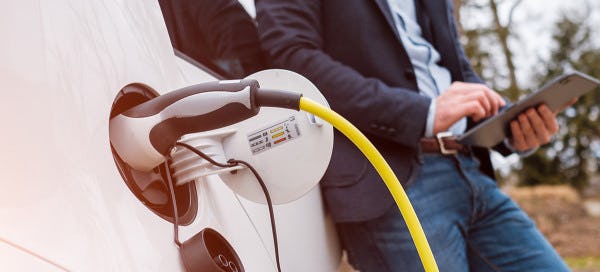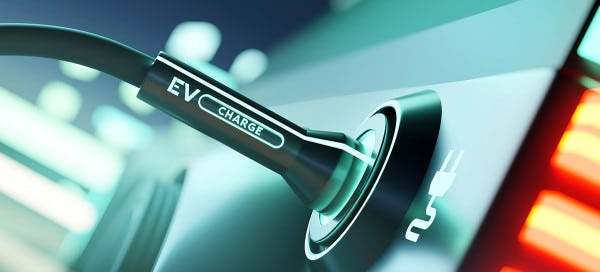In transitioning from gas-powered cars to electric vehicles (or electric cars), the biggest adjustment comes in how you fuel up. While we’re all familiar with filling up at the gas station, the novelty of charging an electric car comes with a set of questions, one of the biggest being… how long does it take to charge an electric vehicle?
Apart from Tesla, all electric vehicles (EVs) are charger agnostic thanks to charging standardization across the EV industry. Tesla models have a special configuration that comes with an adapter so that Tesla owners have the convenience of using any charger on the market while also having the exclusive option of powering up at Tesla Supercharger stations.
As we invite electric vehicles into our world, there are a number of factors to consider in determining how long it takes to charge an EV. The most significant factors are:
Power source
EV battery size
EV charging rate capacity
Charger capacity
Weather
Electric Vehicle Charging
There are three standard levels to EV charging.
Level 1 — 120-volt, 15-amp circuit. This is a typical outlet that you would use in your home. Similar to charging your phone by plugging it into a standard wall socket, you can also plug your electric car into such an outlet and wait for… potentially days to have your vehicle reach full charge. That’s right, days. Level 1 charging is the slowest charging option for electric car owners, and because of that, most drivers elect to install an at home Level 2 charging station. Using Level 1 charging, it would take roughly 20 hours to charge the Tesla Model 3.
Level 2 — 240-volt, 40-amp circuit. This is the outlet type that powers larger household appliances, such as your home’s laundry unit. Most public electric car charging stations are Level 2 chargers. To install one at home may require professional electrical work. According to the National Electrical Code, the electrical circuit must have a current capacity 25% greater than your charger. Therefore, if you have a 32-amp charger, your electrical circuit must be able to provide a 40-amp current. Using Level 2 charging, it would take from 8-12 hours to charge the Tesla Model 3.
Level 3 — 480-volt, 100-amp circuit. Level 3 charging is not available to all electric vehicles. Unlike Levels 1 and Level 2 charging, which supply AC power and require that the vehicle use internal mechanisms to covert the power from AC to DC, Level 3 charging supplies DC power directly to the electric car. Using Level 3 charging with its heavy surge of electrical flow, it would take roughly an hour to fuel up a Tesla Model 3.
To learn more about electric vehicles and EV charging, visit our blogs:
Electric Vehicle Battery Size
Just as it takes longer to fill up a gallon than a single cup, it will take longer to charge up a larger battery than a smaller one (given that you’re using the same charging station in both scenarios). That’s why it takes significantly less time to recharge the smaller batteries of plug-in hybrids than it does to recharge battery-only electric vehicles.
Electric Vehicle Charging Rate Capacity
It might be surprising but the equipment that most associate with the car charger doesn’t actually charge the electric vehicle. The formal name for the ‘car charger’ is Electric Vehicle Supply Equipment (EVSE), as it really serves more like a funnel that safely supplies electricity to the vehicle. Electric vehicles themselves have an internal mechanism that converts power from AC to DC and charges the battery. This internal car charger has a maximum charging capacity, noted in kilowatts (kW). The higher the kW amount, the faster the car can charge.
An easy way to calculate the time needed to charge an electric vehicle is to divide the kilowatt-hour (kWh) battery output by the kW charging capacity, and then add ten percent to account for any losses that may occur throughout the charging process.
KWh / kW + 10% = approximate charging time
The Tesla Model 3 Performance has an 80.5 kWh battery pack and an 11.5 kW charger. Therefore…
80.5kWh / 11.5kW + 10% = 7 hours + .7 hours = 7.7 hours total
So, it takes roughly 8 hours to fully charge the Tesla Model 3 but expect a time range between 8-12 hours in order to take other external factors into account. For instance, electric vehicle batteries operate best between 20% and 80% charge. With that in mind, car manufacturers embedded mechanisms that decrease charging speed once the battery has reached 80% charge.
Electric Vehicle Charging Capacity
Typically speaking, the various charging Levels operate at their same respective voltage outputs: Level 1 at 120-volt; Level 2 at 240-volt; Level 3 at 480-volt. What may change from charger to charger is the amperage, or current, coming from the charger.
Imagine you’re filling up a bucket. To carefully supply water to the bucket, you pass the water through a funnel. The larger the hole at the end of the funnel, the faster the bucket will fill with water. The size of that funnel hole is like the amperage level of your charger — the higher the charger amperage, the larger the hole and the faster the electricity will funnel from the power source into your electric vehicle.
Most electric cars can accept 32-amp current, so a 32-amp charger is sufficient at this time. If you’re looking to future-proof your charging station, however, it may be wise to get a 40-amp charger in preparation for an upgraded car model that can accept a higher flow rate. At the very least, it’s recommended to have a charger that matches the charging capacity of your electric car.
Weather & It’s Impact on Electric Vehicles
Both hot and cold weather impact how effectively an electric vehicle charges. Cold weather restricts batteries’ capacity to charge, as well as their ability to optimize performance. Extreme heat can also adversely affect EV charging. This is especially true when using Level 3 DC Fast Charging, as that impressive outflow of electricity already causes the circuit to heat up, an effect that can be exacerbated by extremely hot weather.
At one point, it must have seemed like a crazy concept to extract fuel from the ground and pump it into a car using a nozzle at a gas station. But just as filling up at the gas station became common practice, so too will charging up our electric vehicles.
While we are still in the early phase of EV adoption, it’s encouraged to consider the factors that impact how long it takes to charge an EV so that you can make the purchasing decisions that best fit your lifestyle. Visit our electric vehicle FAQ page to learn more. If you're ready to start shopping for an electric vehicle, visit our Electric Vehicle Marketplace to compare models by range, price, and maintenance costs.
Whether you own an electric vehicle or you’re considering purchasing one in the future, finding an energy provider with EV electricity plans that meet your needs is critical. At Rhythm Energy, we offer affordable renewable energy plans in Texas for EV owners that meet their needs and budget. Check out our green energy plans today or enter your zip code to find the best electricity plans in your area.




